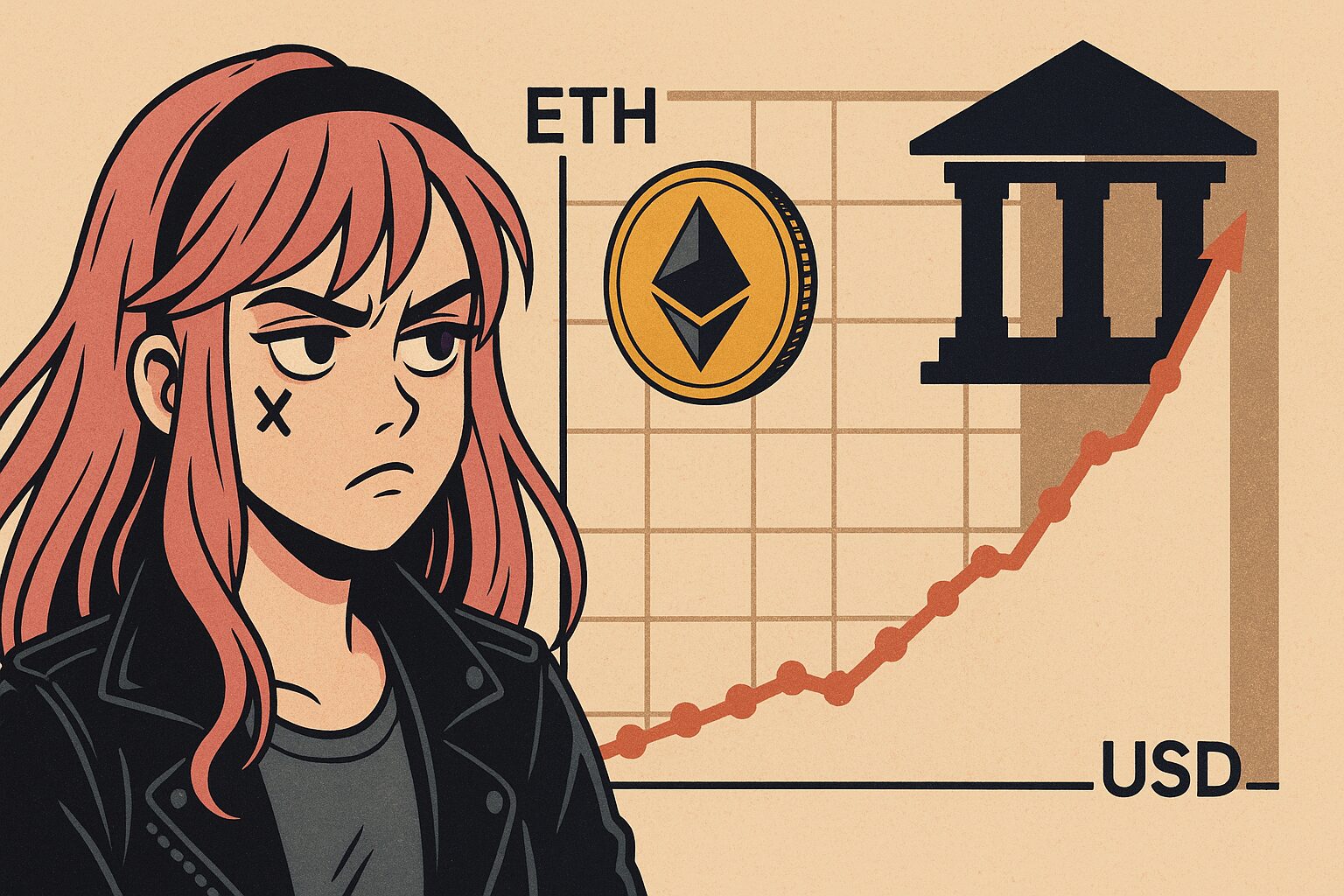Section 1: The Headlines and What Lies Beneath
Rahab (Female Spy)
“Ethereum is back in the headlines again. Standard Chartered predicts it could go as high as $7,500.
On the surface, that might excite investors. But what I’m watching closely is who’s actually profiting behind the scenes.
U.S. financial giants claim to be ‘joining the blockchain revolution,’ yet behind closed doors, they’re aiming to seize control over protocols and fee structures.
DAO and P2P networks were built to avoid centralized power like this, but now they risk being reshaped into Wall Street-style governance models.”
Commentary
Today’s ETH rally is fueled not only by increased demand but also by the entry of U.S.-based financial institutions via ETF products and institutional services. While prices may rise in the short term, if network governance and transaction costs become concentrated in the hands of capital, the benefits of decentralization will erode.
Section 2: The Impact on Everyday Users
Moka (Messenger of Love)
“What scares me is that the higher the price goes, the harder it becomes for regular creators and fans to participate.
Gas fees skyrocket, and the cost to join NFTs or DAOs goes up as well. In the end, only well-funded investors and corporations benefit, while the original dream of ‘an open community for everyone’ disappears.
Isn’t this just like the internet? It started open and free, but eventually got dominated by tech giants like Google and Facebook.”
Background Note
Web3’s promise of “democratized access” depends on low-cost, low-barrier participation. Price spikes and network centralization increase those barriers, pushing the creator economy toward capital concentration.
Section 3: Learning from History’s Market Manias
Rachel (Apathetic Punk Youth)
“Howard Marks said it best: ‘Successful investing requires second-level thinking.’
First-level thinking is, ‘ETH is good → Buy.’ Second-level thinking is, ‘When everyone is buying, should I question why?’
Dot-com bubble, ICO bubble, NFT bubble… each time, people believed it was a revolution. But what happened afterward?
The real winners were the central players who concentrated capital during the price waves. Small players like us were left stranded when the tide went out.”
Quote (from The Most Important Thing)
“First-level thinking is simplistic and easy. Second-level thinking is deep, complex, and involves seeing beyond the surface to the underlying reality.”
Section 4: Choosing PGirlsChain
John (Young Monk)
“That’s why we chose PGirlsChain.
Not a network under U.S. capital’s control, but our own independent chain. And our own token, PGirls.
We enforce DAO governance, keep fees low, and connect creators directly with fans.
This isn’t just a technical choice — it’s a political one to protect the original ideals of Web3.
No matter how high ETH goes, the real question is: Who controls the network? If we give up on that, the decentralized future is gone.”
Commentary
PGirlsChain is designed to prioritize community value over speculative pricing. DAO-based decision-making, low gas fees, and a globally accessible node structure serve as countermeasures to U.S. capital-driven centralization.
